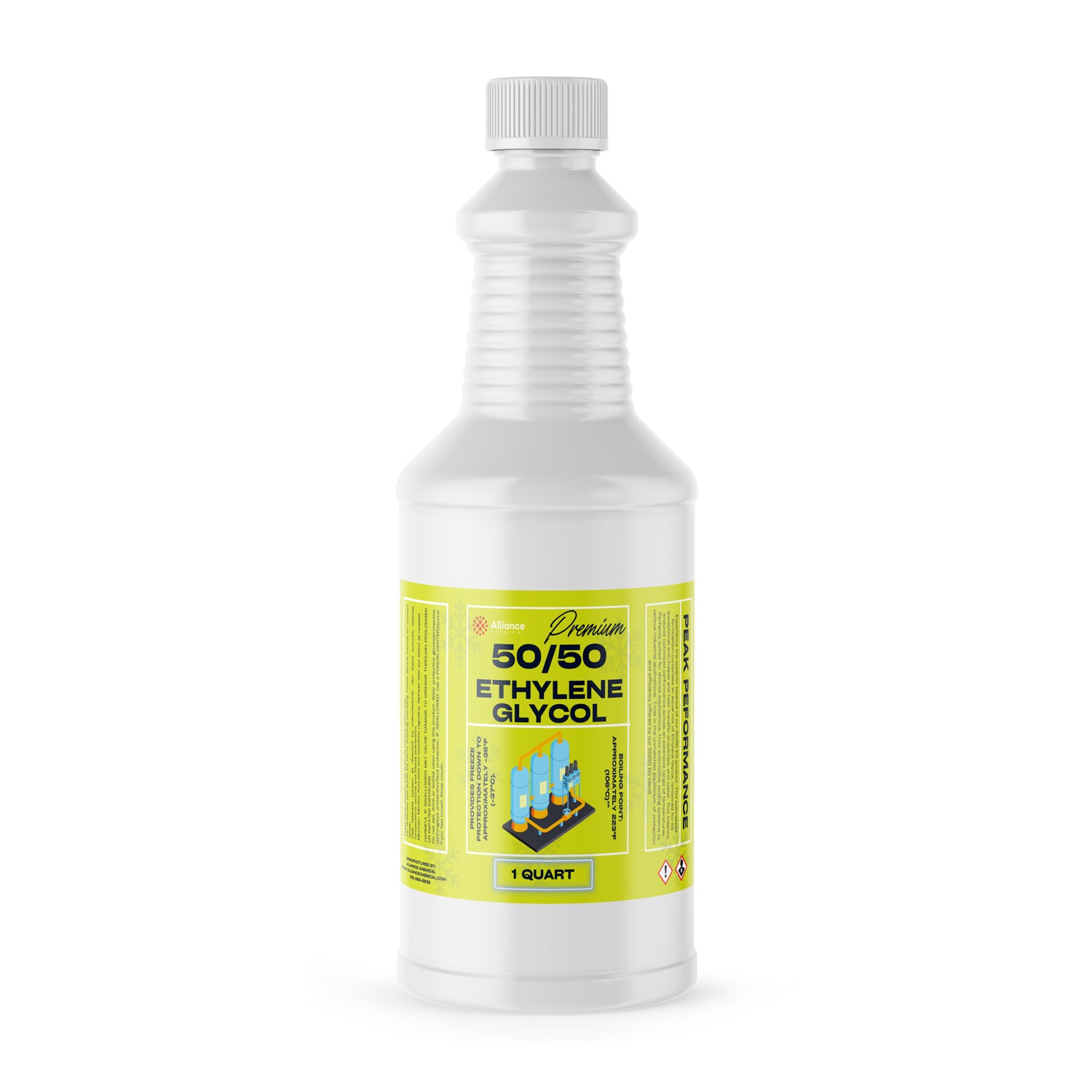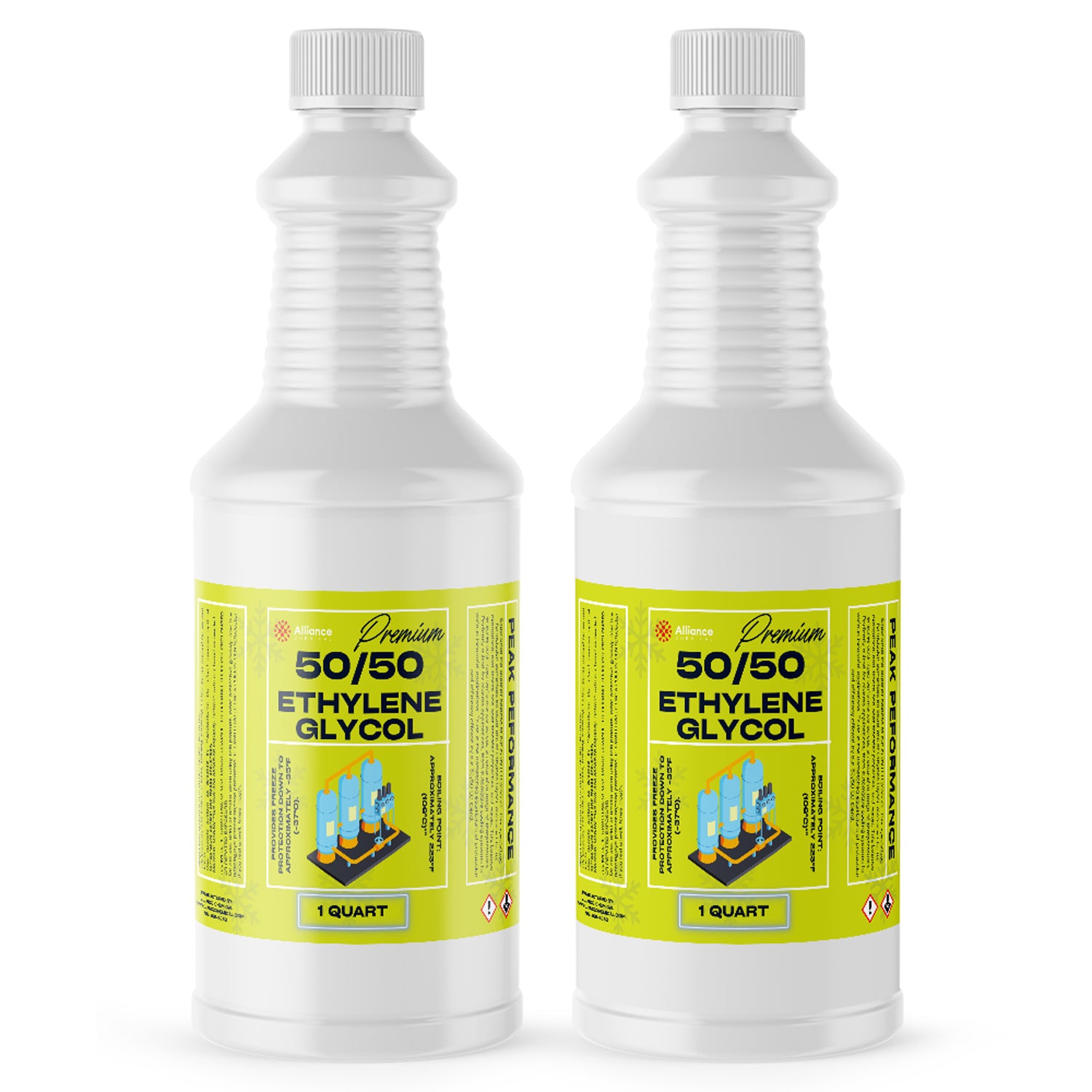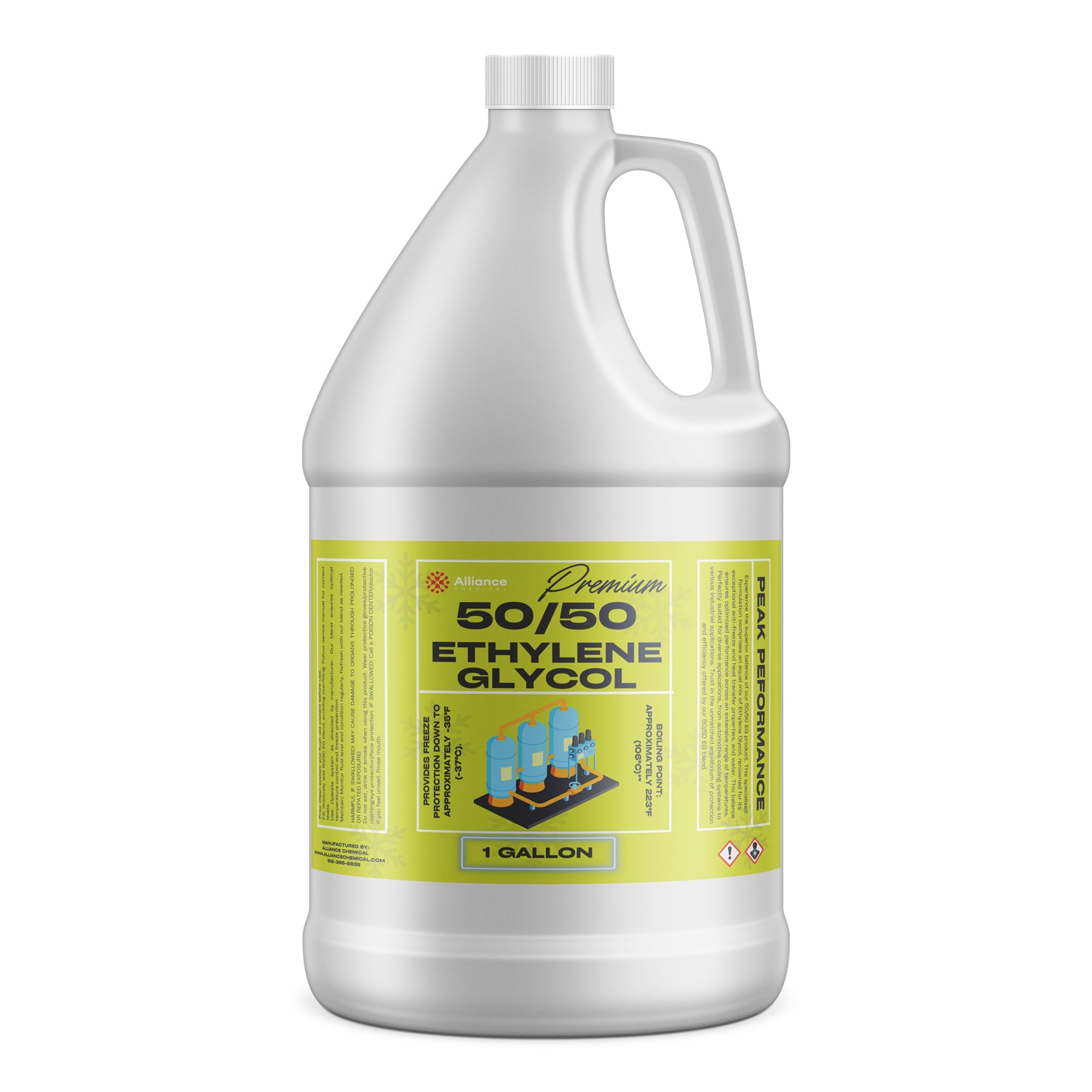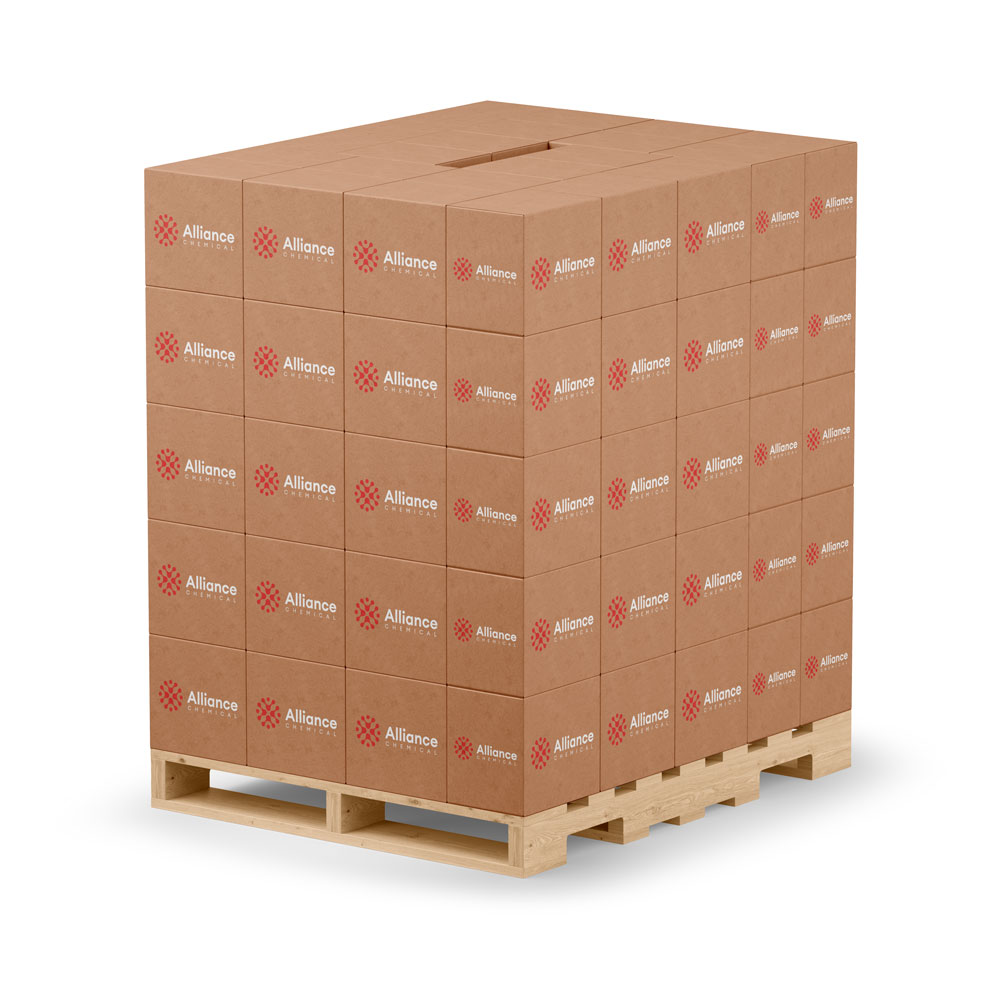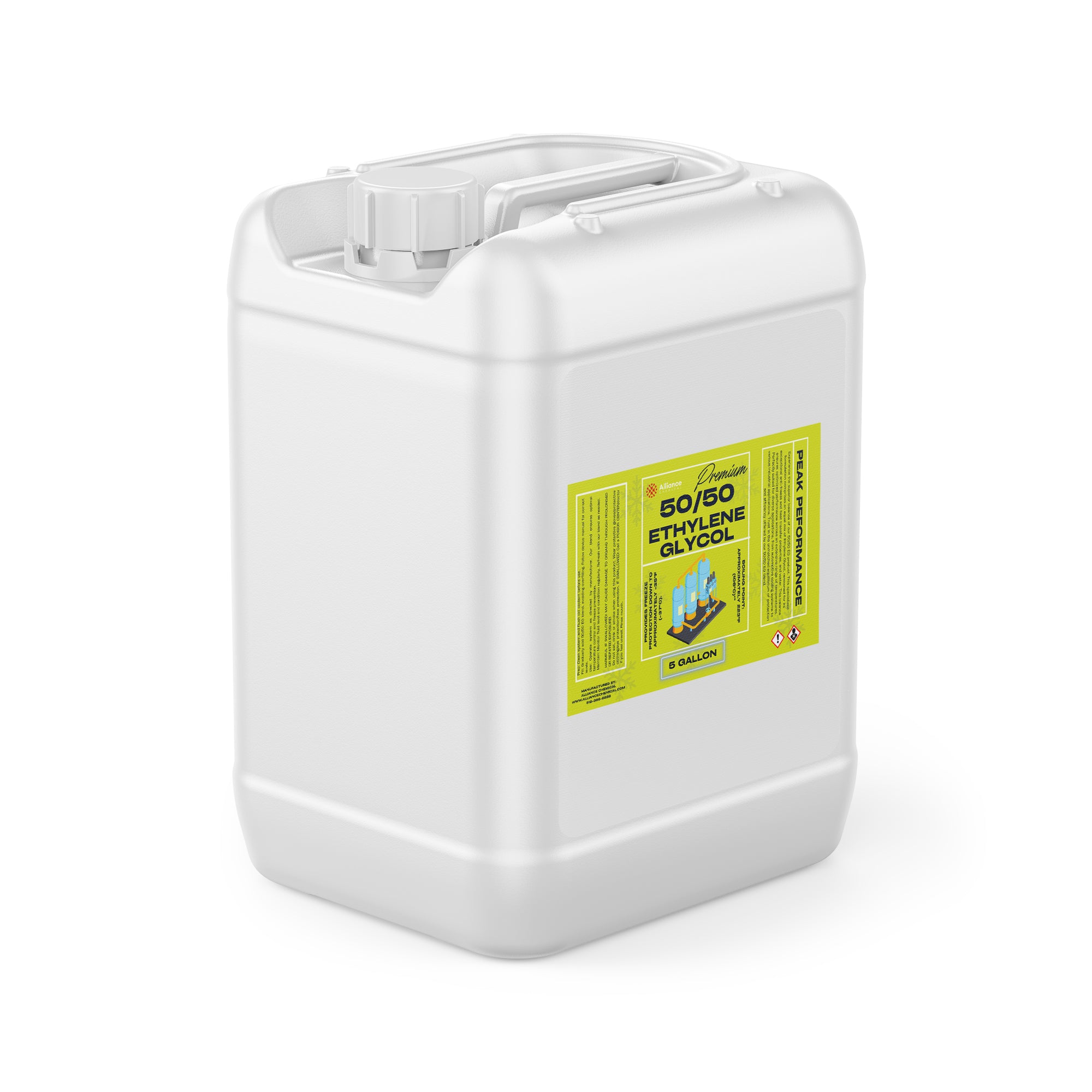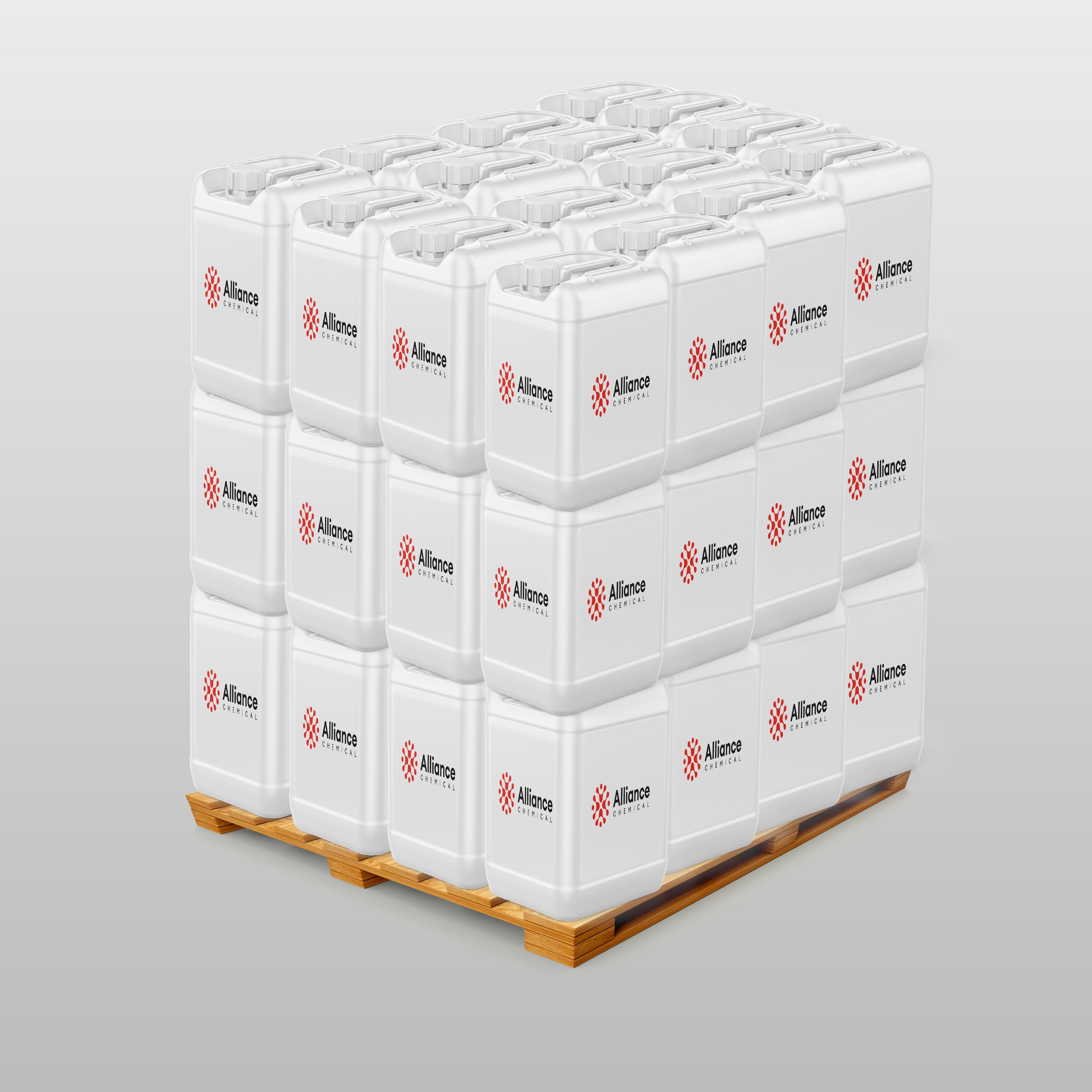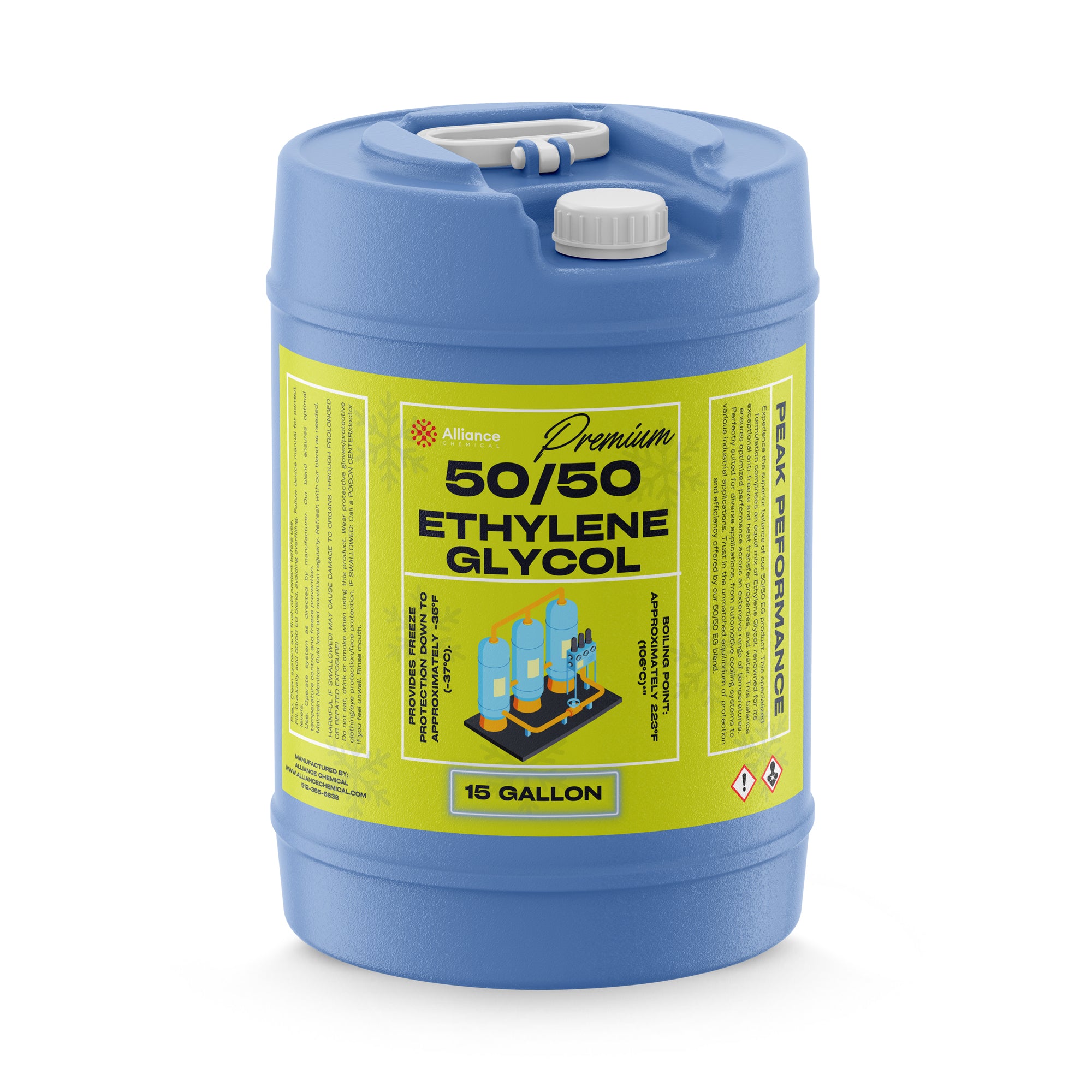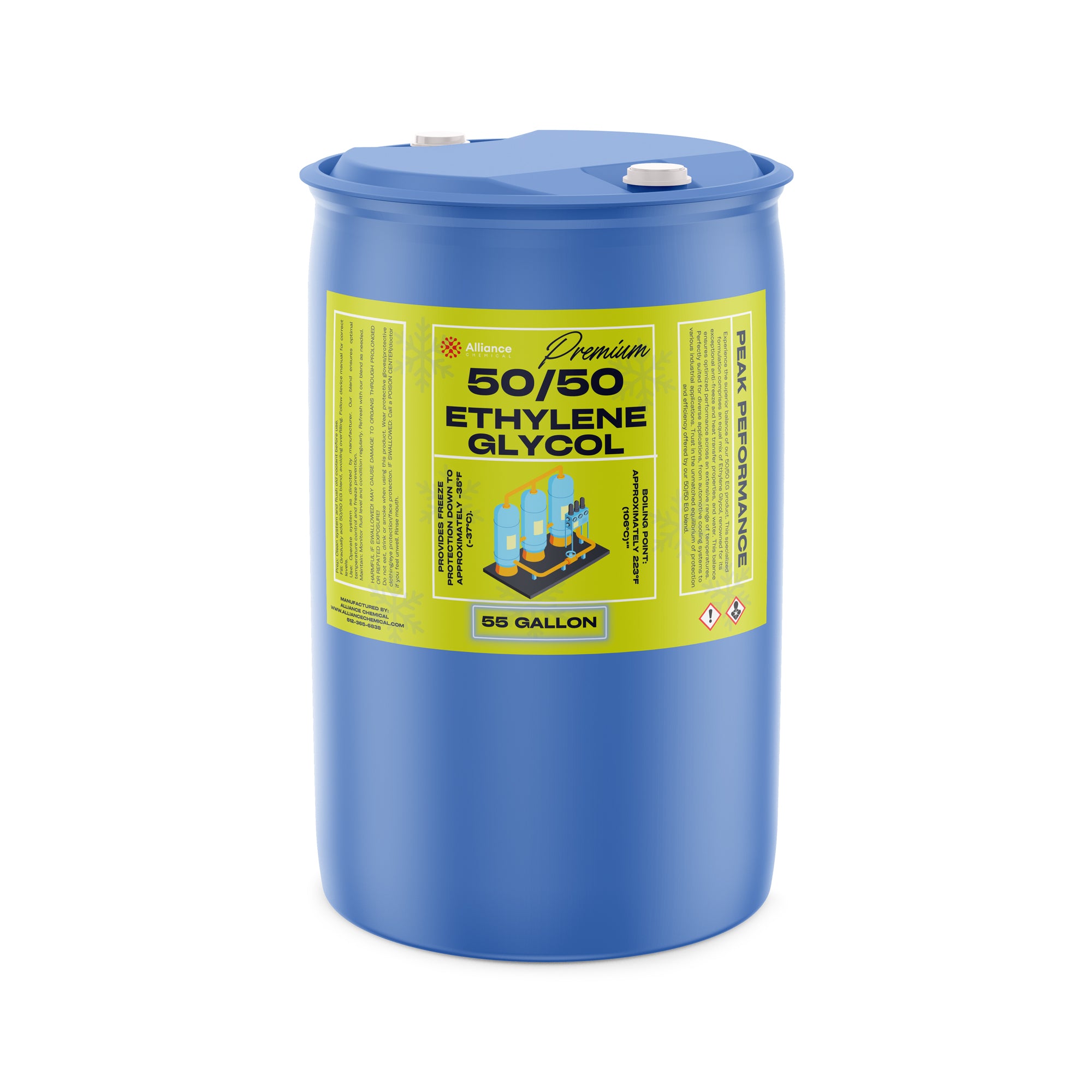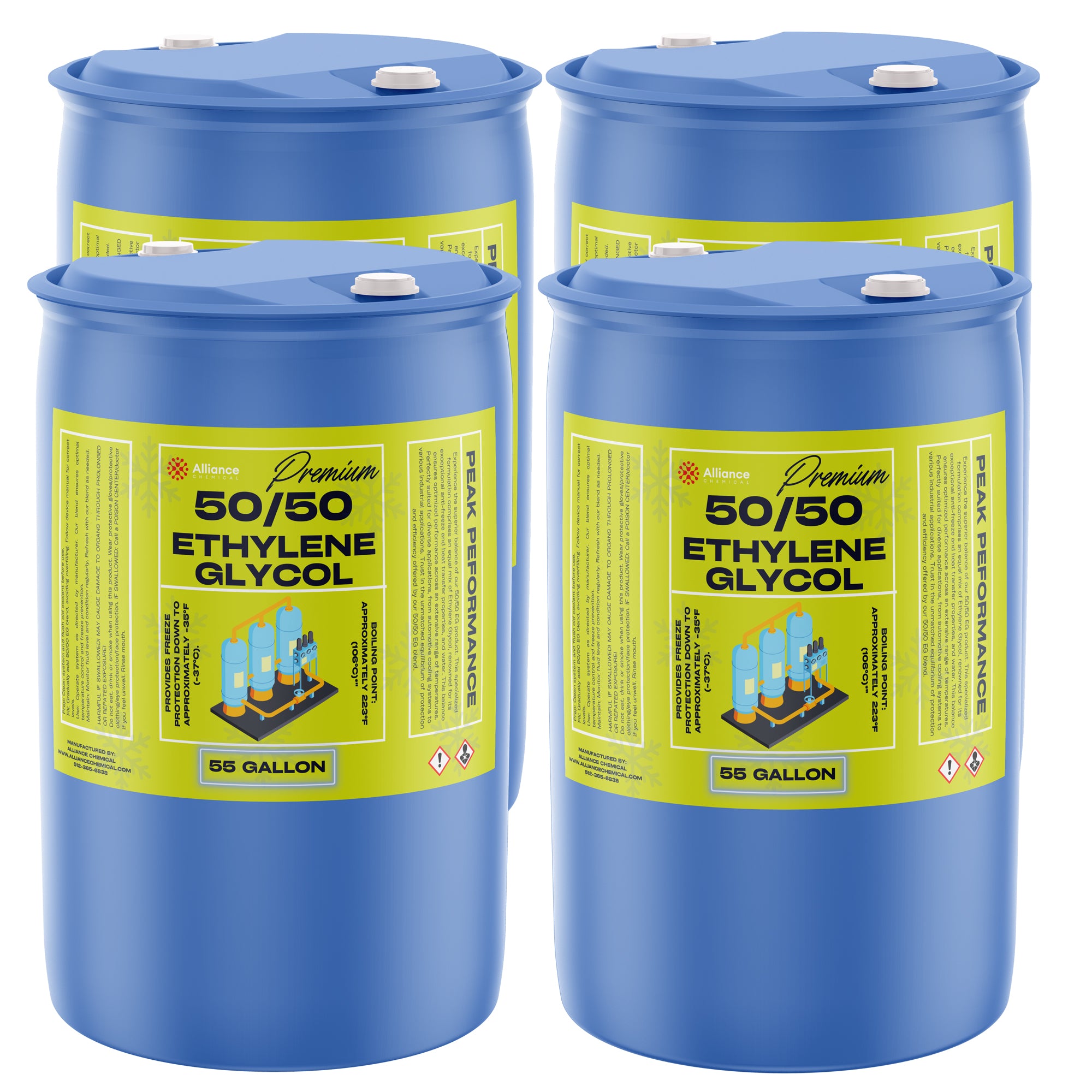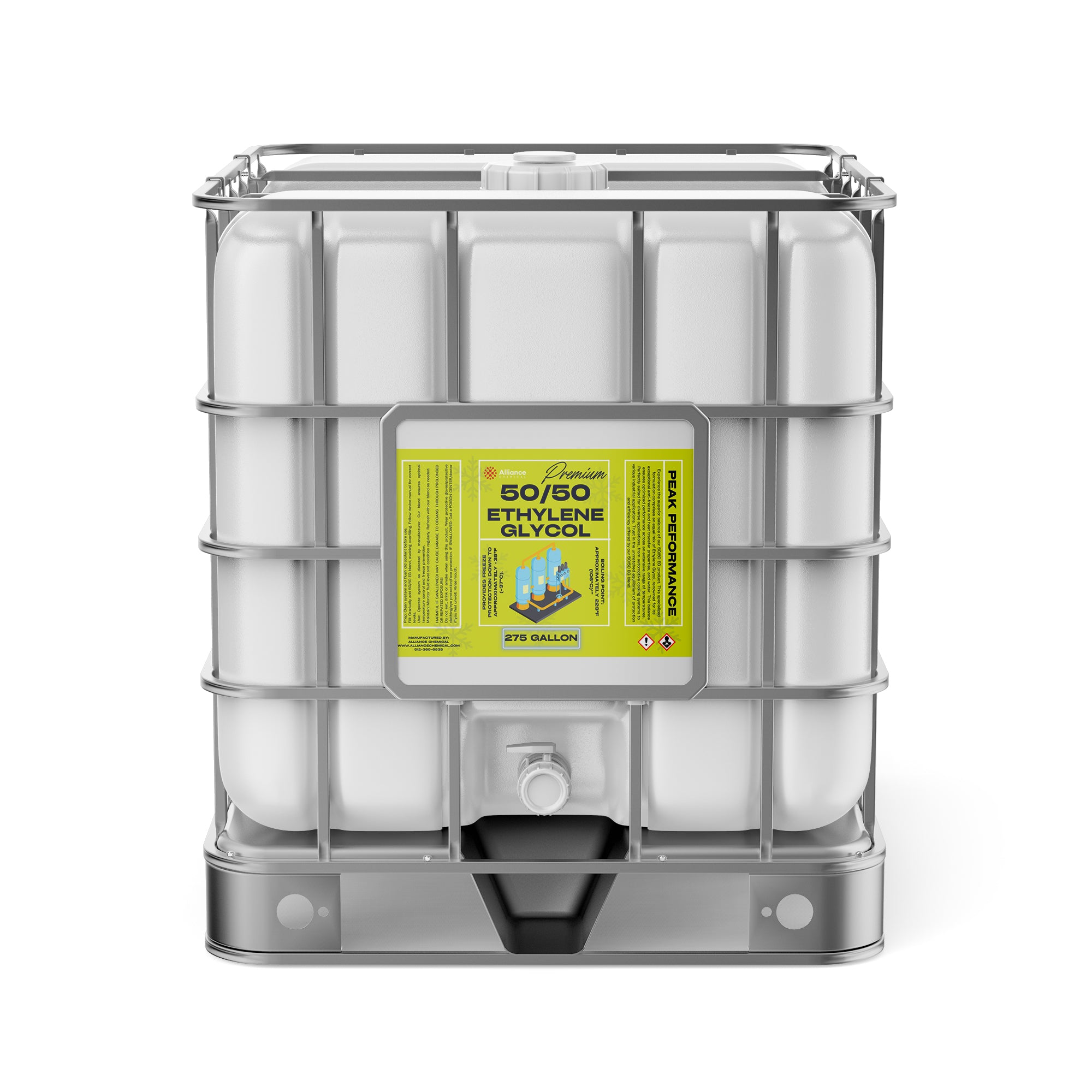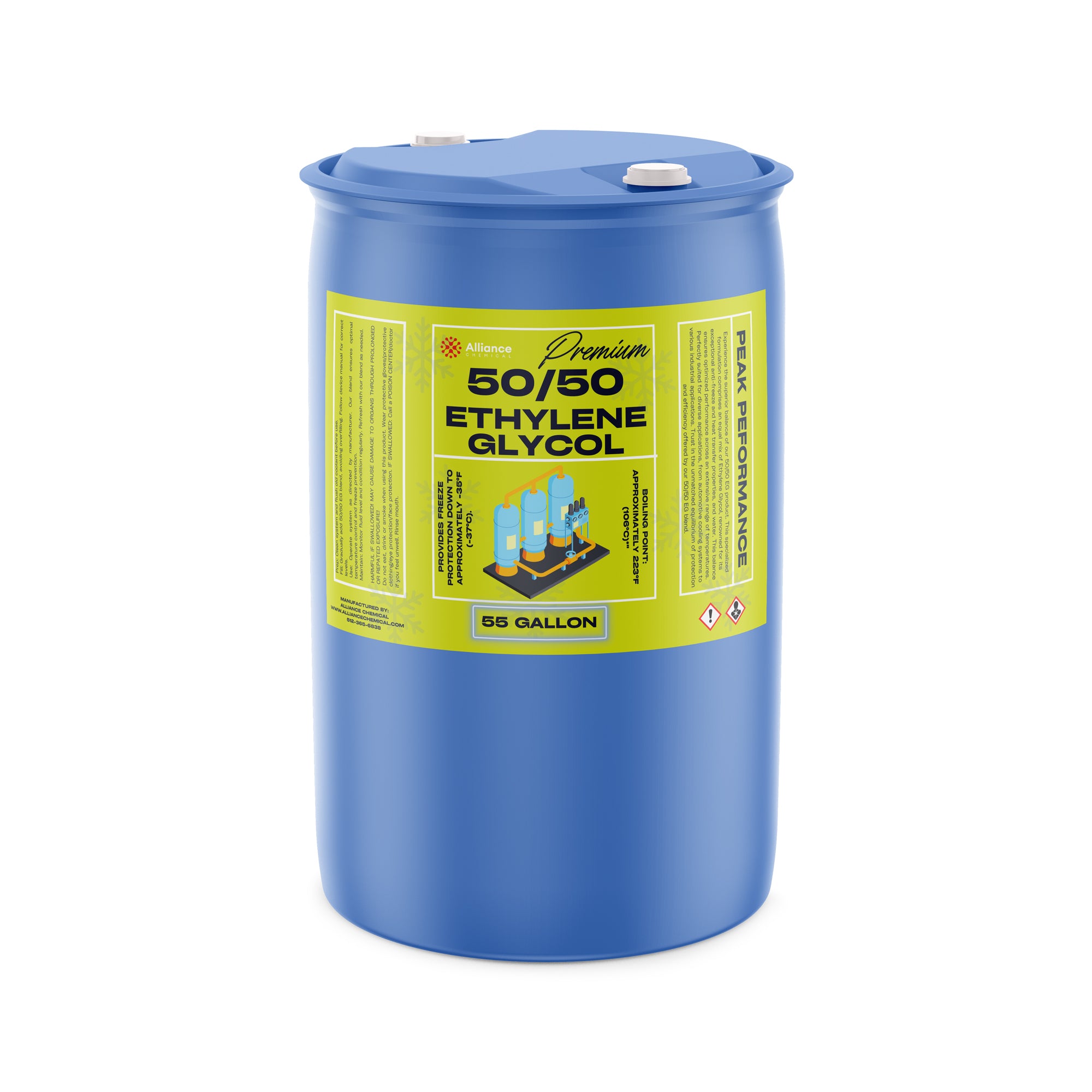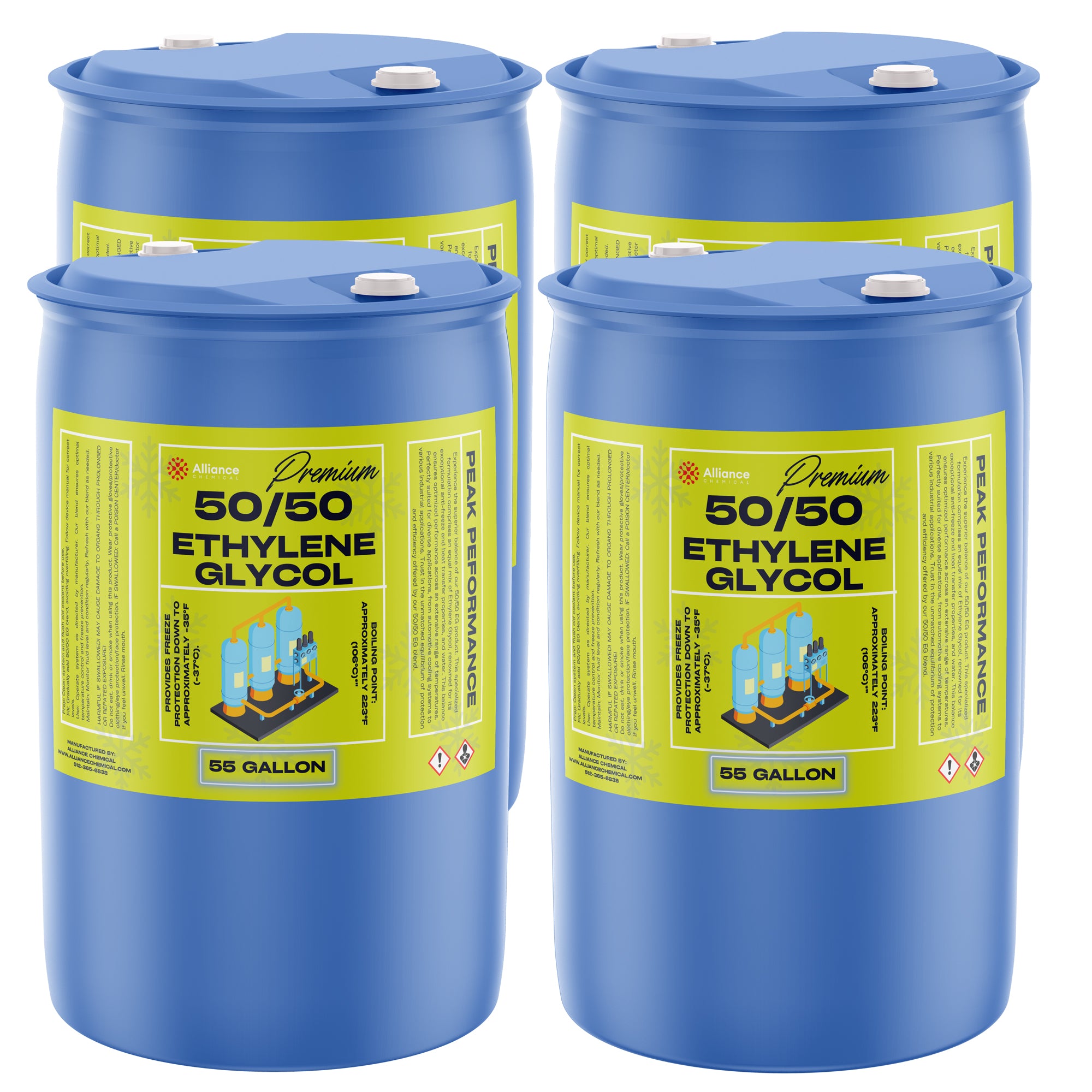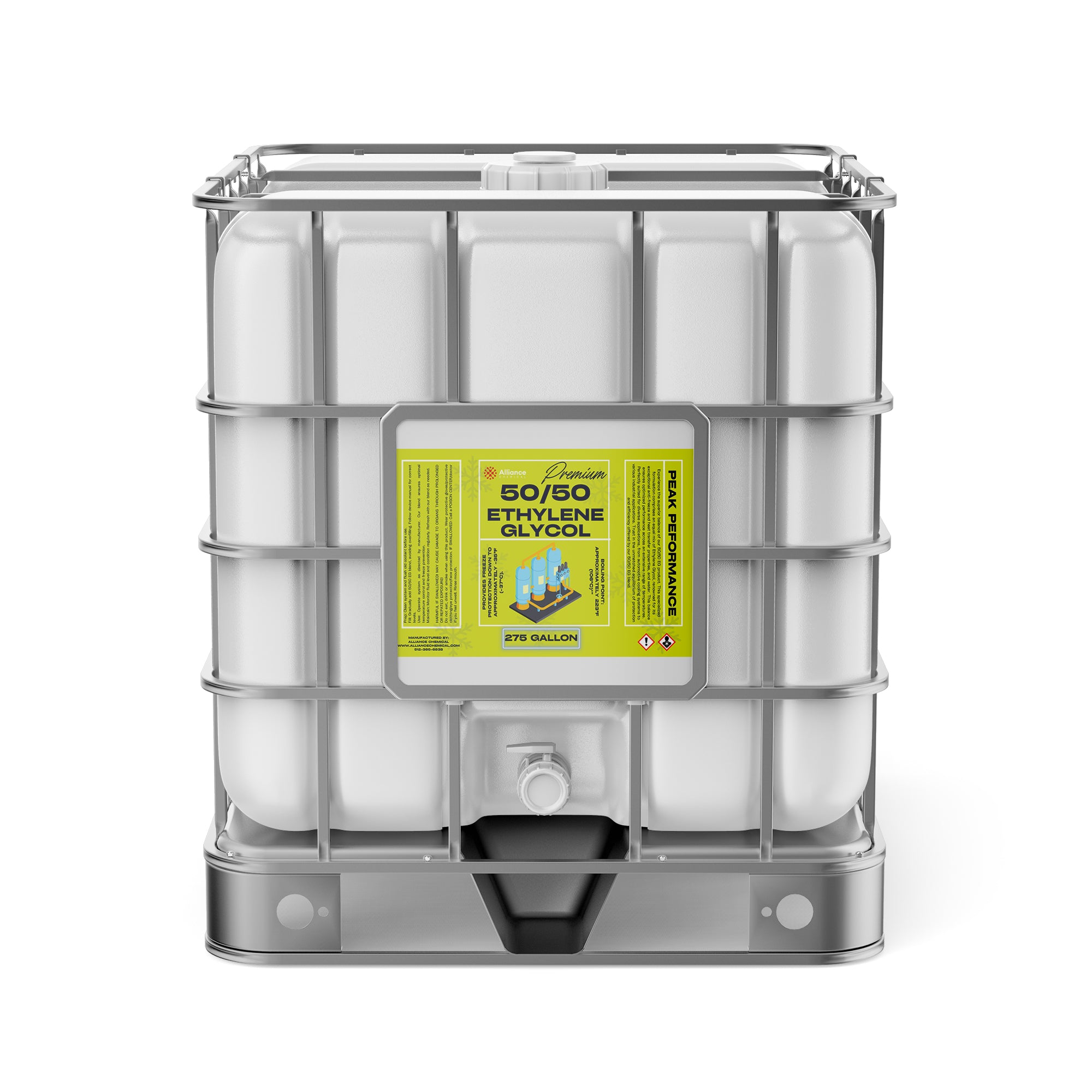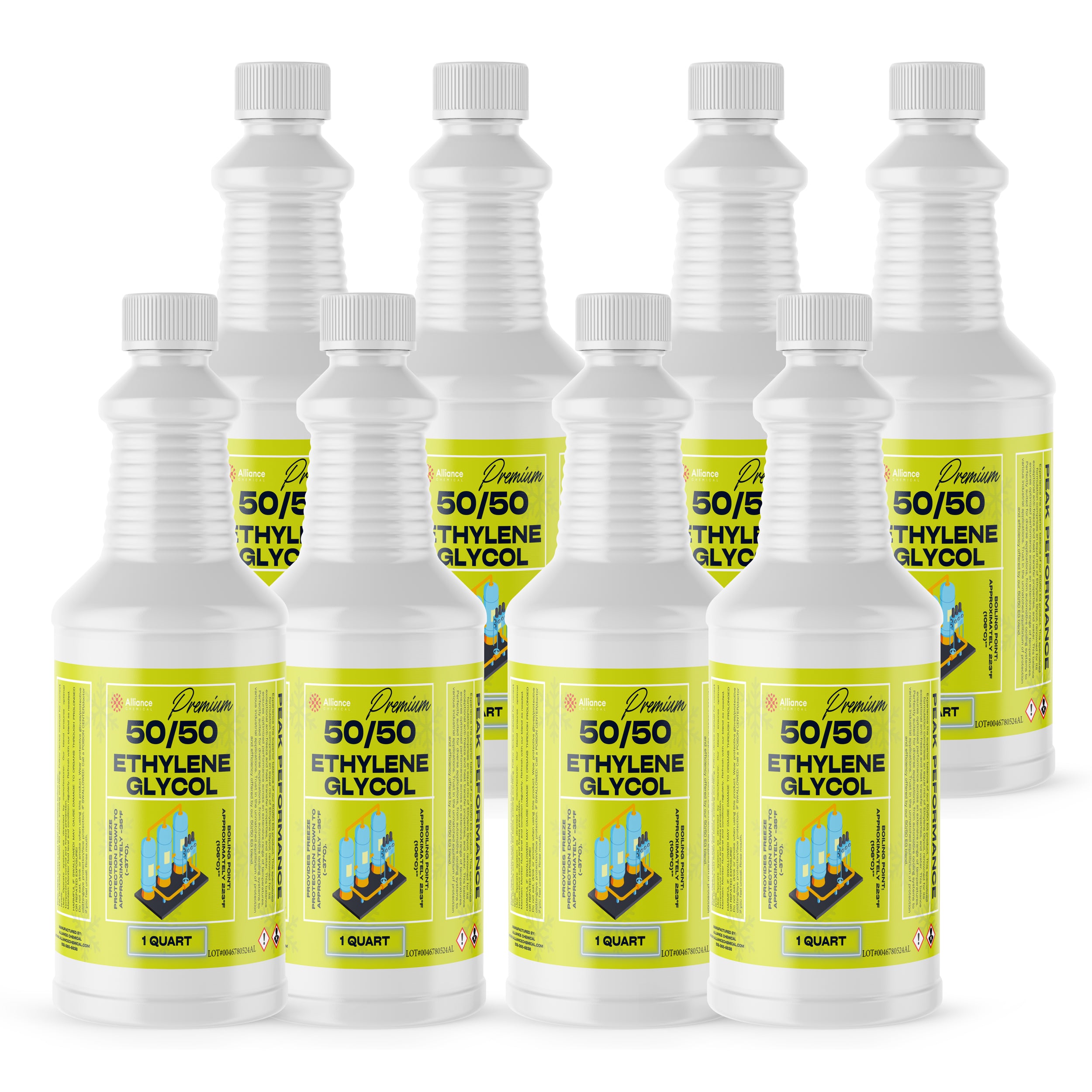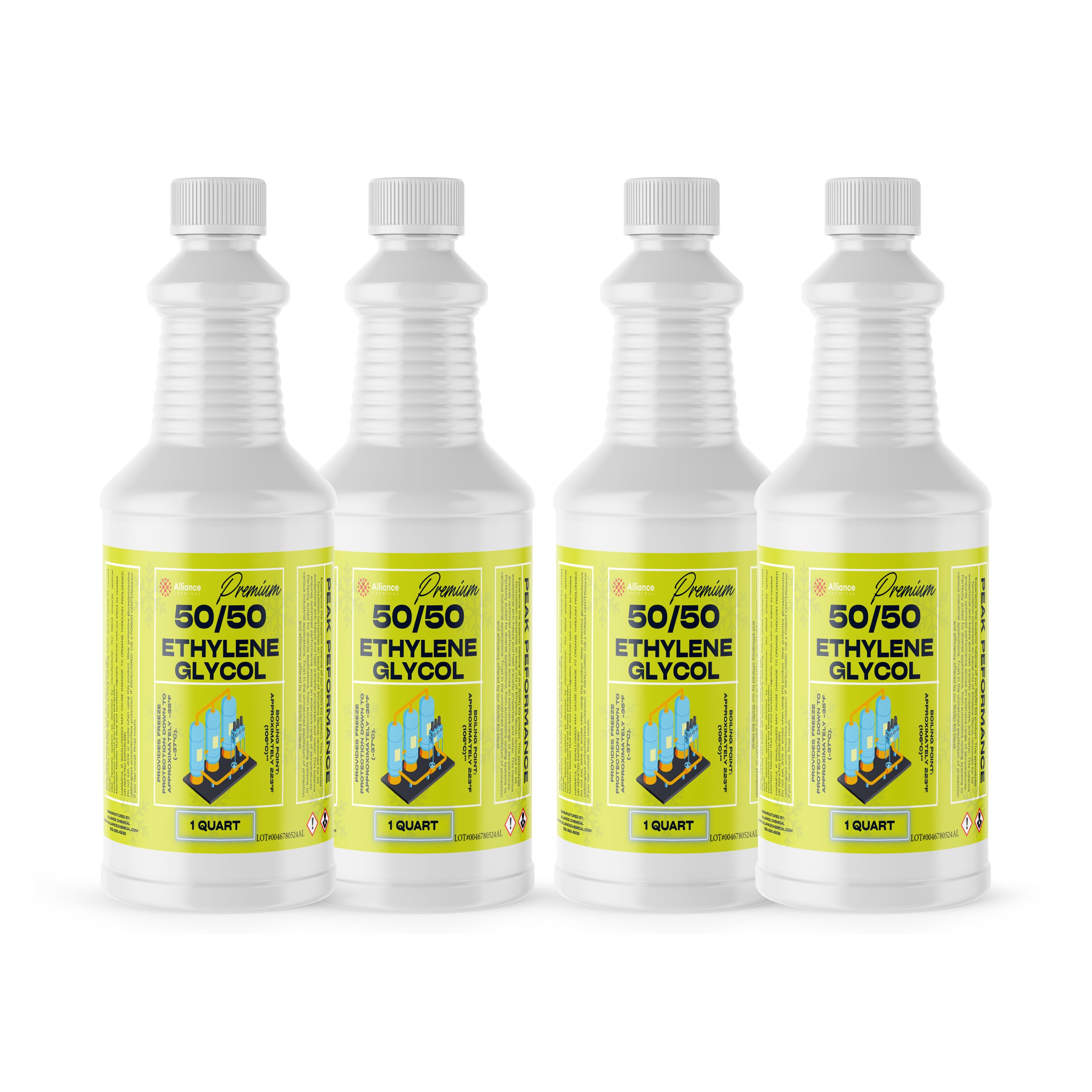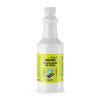Ask a question
Product Overview
Ethylene Glycol 50/50 is a balanced aqueous solution containing ethylene glycol and water designed for reliable temperature control in industrial and automotive settings. The formulation combines thermal stability with a low freezing point, enabling efficient antifreeze performance and consistent heat transfer. This 50/50 mixture provides predictable rheology and pumpability across a wide range of operating conditions, making it suitable for closed-loop cooling systems, chiller circuits, and process heat exchangers. The product is manufactured to meet Technical Grade specifications, ensuring compatibility with metal components and typical coolants used in manufacturing facilities.
As a versatile coolant and heat transfer fluid, Ethylene Glycol 50/50 demonstrates excellent miscibility with water and common alcohols, and it maintains viscosity characteristics suitable for standard pumping systems. The solution supports reliable performance in aerospace de-icing contexts and general de-icing tasks where low-temperature operation is critical. The product’s quality is validated by multiple analytical tests, including GC/HPLC assay confirmation and rigorous impurity controls, aligning with industry expectations for industrial antifreeze applications.
Key Properties
- CAS: 107-21-1
- Appearance: Clear, colorless liquid
- Odor: Slightly sweet odor
- Boiling Point: 197.6°C
- Freezing Point: -12.9°C
- Solubility: Miscible in water and alcohols
- Flash Point: 111°C
- Vapor Pressure (20°C): 0.06 mmHg
- Viscosity (25°C): 20.1 cP
- Refractive Index (20°C): 1.431
- Density (25°C): 1.115 g/mL
- Molecular Weight: 62.07 g/mol
- Molecular Weight (kg/kmol): 62.07
- Specific Gravity (20°C, typical): 1.07
- Residue After Ignition: 0.01–0.05% (typical 0.01%)
- Chloride (Cl): 10–50 ppm (typical 10 ppm)
- Nitrate/Nitrite (NO3): ≤50 ppm (typical 5 ppm)
- Ammonium (NH4+): ≤5 ppm (typical 1 ppm)
- Heavy Metals (Pb, Cd, Cr, Ni, etc.): ≤0.5 ppm total (typical 0.05–0.1 ppm)
- Iron (Fe): ≤0.2 ppm (typical 0.05 ppm)
Common Applications
- Application Category: Antifreeze Agent – Automotive industry; prevents freezing and reduces overheating in cooling systems while maintaining flow characteristics suitable for conventional radiator circuits.
- Application Category: Heat Transfer Fluid – Industrial processes; used in closed-loop cooling and process heating where stable thermal conductivity and low viscosity are required for pumpability.
- Application Category: Hydraulic Fluid – Manufacturing equipment; supports lubrication and thermal management in hydraulic circuits with good miscibility in common hydraulic oil blends.
- Application Category: De-icing Agent – Aerospace; applied to surfaces requiring low-temperature protection and effective ice control during winter operations.
- Application Category: Solvent for Chemical Reactions – Chemical manufacturing; serves as a reagent medium and reaction solvent in diverse synthesis processes.
- Application Category: Glycol-based Cleaning and Lubrication – Industrial maintenance; used in batches where low freezing point and low vapor pressure are advantageous.
Safety Precautions
Handle and store Ethylene Glycol 50/50 in tightly closed containers in a cool, dry place away from direct sunlight. Use compatible materials such as HDPE or stainless steel for storage and transfer, and ensure proper ventilation to minimize inhalation exposure. Employ appropriate PPE including chemical-resistant gloves, goggles, and a lab coat or coveralls when handling. Follow standard industrial hygiene practices to prevent skin and eye contact.
In case of exposure, adhere to emergency procedures: for eyes, rinse cautiously with water for several minutes; for skin, wash with soap and water and seek medical advice if irritation persists; for inhalation, move to fresh air and maintain comfortable breathing; if ingested, contact a poison center or physician. This product is designated as UN 3082, Environmentally hazardous substance, liquid, n.o.s., Class 9, PG III for transport, and SDS indicates precautionary measures for acute toxicity and potential organ system effects. Ensure spill containment and cleanup with inert absorbents and proper disposal in accordance with local regulations.
Benefits
✔ Reliable antifreeze performance – Provides a balanced freezing point and robust thermal stability for diverse cooling systems.
✔ Consistent heat transfer – Stable viscosity and density support predictable pumpability and efficient heat exchange.
✔ Industrial-grade purity – Meets Technical Grade specifications with controlled metal impurity levels to minimize corrosion risk.
✔ Broad compatibility – Compatible with common metals and polymers used in industrial cooling and de-icing applications.
✔ Rigorous quality controls – GC/HPLC assay, IC/ICP-OES testing, and heavy metals screening ensure compliance with safety and environmental standards.
| Property | Value |
|---|---|
| Molecular Weight | 62.07 g/mol |
| Formula | C2H6O2 |
| Assay | 50% |
| Flash Point | 111 |
| Form | Liquid |
| Solubility | Water-soluble, miscible with organic solvents |
| Appearance | Clear, viscous, colorless liquid solution |
| Melting Point | -13 °C |
| Boiling Point | 197 °C |
| Specific Gravity | 1.07 |
| Industry | Industrial, Wastewater, Petroleum, Manufacturing, Power Generation |
8T5-TGD-B6W
$14.00
Unit price
Compare Products
| Price |
|---|
| SKU |
| Rating |
| Discount |
| Vendor |
| Tags |
| Weight |
| Stock |
| Short Description |

